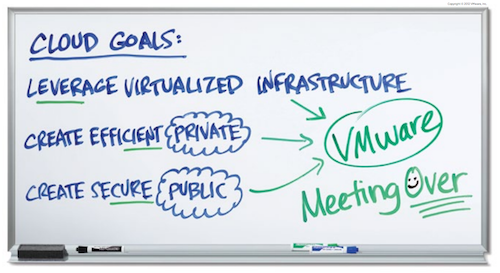VMware rethinks vRAM licensing model
VMware has made some interesting manoeuvres this month with regard to the licensing of its vRAM technology. The previous licensing model enforced RAM restrictions and limitations on users of vSphere 5, VMware’s cloud computing virtualisation operating system.
As the company debuts vSphere 5.1 at VMworld 2012 exhibition and conference, a new model will come into effect. Out goes the previous vRAM licensing limits as VMware moves back to a per-CPU licensing charge for the product.
Reports suggest that the vRAM licensing scheme had been badly received by customers, partners and users at all levels since its initial inception back in July 2011. Although VMware made some attempt to placate its user base by raising of the specific RAM limits under the cap, this was seen as a shorter term remedial step rather than a longer term mitigation action.
Flaky commercial judgement?
VMware justified its vRAM licencing moves with the introduction of vSphere 5 at the time by explaining that it needed to “align costs with the benefits of virtualisation” rather than with the physical attributes of each individual server.
According to VMware, “These changes generated debate in the blogosphere, across the VMware communities, and in conversations with customers and partners. Some of the discussion had to do with confusion around the changes. We have been watching the commentaries on the blogs very carefully, and we have been listening in the customer conversations very intently. We got a ton of feedback that probed the impact of the new licensing model on every possible use case and scenario and equally important, reflected our customers’ intense passion for VMware.”
VMware’s own communities.vmware.com forum saw disgruntled customers voice their disquiet on the licensing model changes at the time of their implementation.
SuperSpike wrote on July 12 2011 in response to a user post entitled ‘Anyone else completely shocked by this move?’ as follows, “Yes, I am totally floored by it… We’re going to end up with 6 dual CPU servers with 1.5TB of memory (so 12 CPU Enterprise Plus licences). With the new scheme, it looks like we’re going to have to purchase an additional 20 CPU licences just to use what we have.”
Licensing U-turn
Taking its customers’ opinions seriously then, VMware says it will now bring about three changes to the vSphere 5 licensing model that address the three most recurring areas of customer feedback:
- The firm has increased vRAM entitlements for all vSphere editions, including the doubling of the entitlements for vSphere Enterprise and Enterprise Plus.
- It has capped the amount of vRAM we count in any given VM, so that no VM, not even the “monster” 1TB vRAM VM, would cost more than one vSphere Enterprise Plus license.
- VMware says it has also adjusted its model to be much more flexible around transient workloads, and short-term spikes that are typical in test & development environments for example.
“We are confident that our vSphere 5 licensing model based on pooled vRAM is the right one for the cloud computing era. We are fully committed to meeting our customers’ and partners’ unique needs, and have several resources available to help customers understand how the new licensing model applies to their environment. I would specifically point you to the ROI calculator on upgrading to vSphere 5, as well as a tool you can apply against your VI3.5 or vSphere 4 environment to ascertain your vRAM consumption, and therefore any impact on vSphere 5 licensing,” said Bogomil Balkansky, VMware VP of product management.
Expect more on this subject at VMworld 2012 in the days ahead.

Related articles:
- Tags: VMWare · VMware Licensing · vRAM
